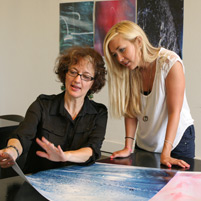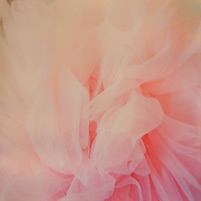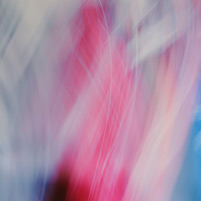Brain Art

Ashley Baker (BHA'12)

Prof. Maurides discusses Ashley's work (below).



As a child, Carnegie Mellon University alumna and professor Patricia Maurides was rarely without her magnifying glass.
From bugs to butterflies, her curiosity wasn't satisfied until she saw everything at a higher level of magnification.
This fall, she is satisfying that same curiosity by adding a 'new lens' to her "Digital Color Photography" class — and it's her students who stand to benefit.
Marlene Behrmann, director of CMU's Cognitive Neuroscience Lab and a pioneer in the field of brain, mind and learning, will join forces with Maurides — giving students a deeper understanding.
"In their first project for the class, students research anomalies of perception as inspiration and content for their photographs," Maurides explained.
"Now, Marlene's expertise will bring another perspective into a deeper way of seeing and experiencing the world."
Ashley Baker (BHA'12), who took the class last semester, decided to explore her own migraine headaches for the project.
"I thought it would be both a challenge and enlightening to explore through photography the way migraines alter my own personal perception," said Baker.
"So basically, my goal for the photos was to try to visually create the feeling of a migraine."
Baker experimented with many different techniques — including painting on her prints to draw attention to the hypersensitivity to bright colors that comes with migraines.
"Migraine sufferers also experience blurred, foggy or cloudy vision, so I experimented with the focus and other effects," Baker said.
Other migraine symptoms she worked to convey: numbing, tingling, flashes of light, speech problems — even the 'Alice in Wonderland' syndrome, in which people confuse the size and shape of their bodies and sometimes have mild hallucinations.
Behrmann's lab investigates the psychological and neural bases of visual processing with a particular focus on the way signals from the eye are transformed into something meaningful and coherent by the brain, rapidly and efficiently.
"It is my hope that this project will fine-tune the students' ability to perceive, to look closely at material, to be open to new ideas and innovations and put in place in their very earliest CMU experience the idea that many things are possible," Behrmann said.
Maurides (A'95) is a visual artist with a multidisciplinary background in biology and art, and former director of the BHA and BSA Programs.
She also teaches a studio laboratory course called "Art and Biology" each spring and often works collaboratively on projects that intersect the biological sciences and the visual arts.
"Bringing Marlene in provides students with an opportunity for a broader understanding of how their visual system interprets light and color," Maurides said.
"Perhaps most importantly, it offers a chance for students to explore territory between and beyond familiar disciplines."
Baker added, "I think bringing in a brain expert to the class will further inspire and push the students' work to a very unique and unexpected place."
Related Links: About Patricia | About Marlene | Brain Sync | Brain, Mind & Learning Initiative
